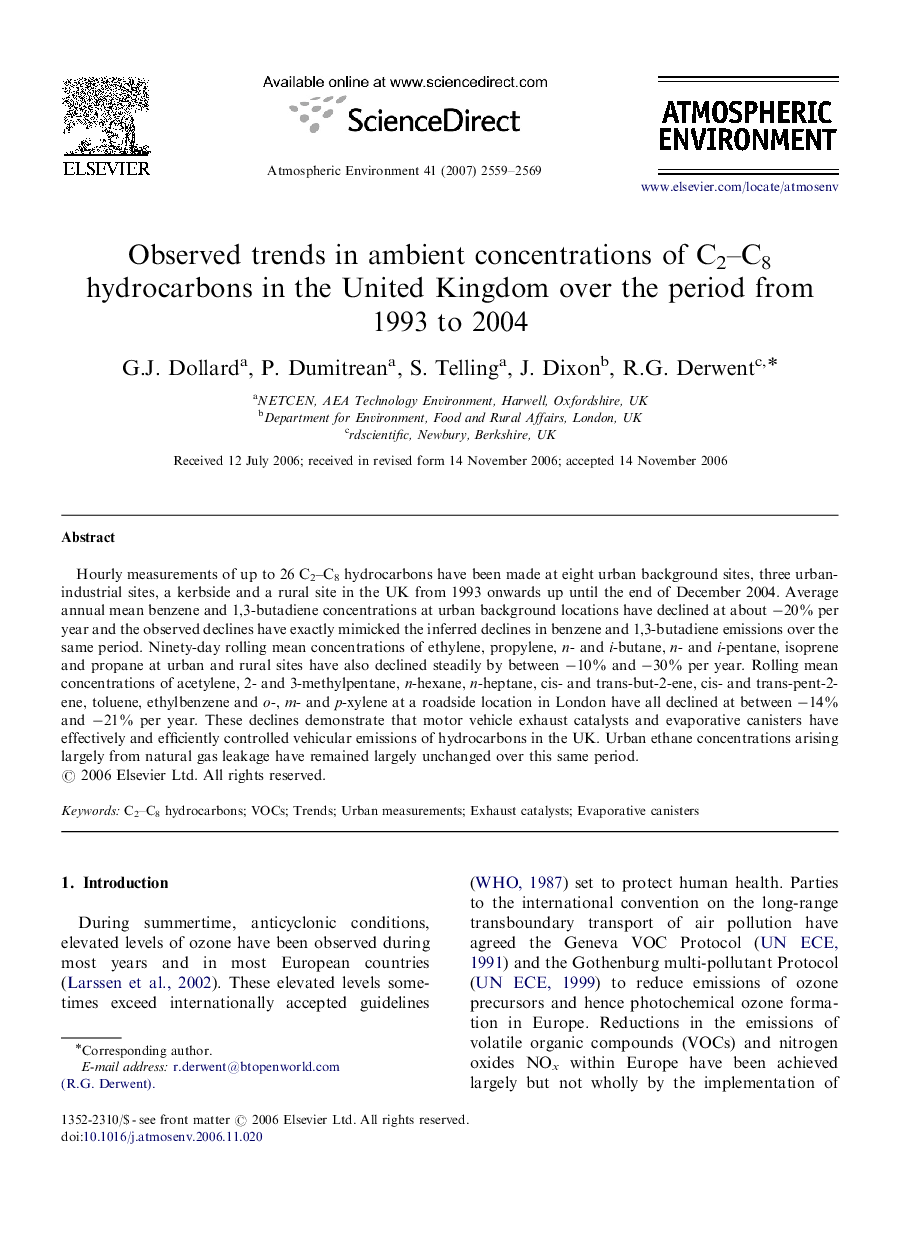| Article ID | Journal | Published Year | Pages | File Type |
|---|---|---|---|---|
| 4443784 | Atmospheric Environment | 2007 | 11 Pages |
Hourly measurements of up to 26 C2–C8 hydrocarbons have been made at eight urban background sites, three urban-industrial sites, a kerbside and a rural site in the UK from 1993 onwards up until the end of December 2004. Average annual mean benzene and 1,3-butadiene concentrations at urban background locations have declined at about −20% per year and the observed declines have exactly mimicked the inferred declines in benzene and 1,3-butadiene emissions over the same period. Ninety-day rolling mean concentrations of ethylene, propylene, n- and i-butane, n- and i-pentane, isoprene and propane at urban and rural sites have also declined steadily by between −10% and −30% per year. Rolling mean concentrations of acetylene, 2- and 3-methylpentane, n-hexane, n-heptane, cis- and trans-but-2-ene, cis- and trans-pent-2-ene, toluene, ethylbenzene and o-, m- and p-xylene at a roadside location in London have all declined at between −14% and −21% per year. These declines demonstrate that motor vehicle exhaust catalysts and evaporative canisters have effectively and efficiently controlled vehicular emissions of hydrocarbons in the UK. Urban ethane concentrations arising largely from natural gas leakage have remained largely unchanged over this same period.
